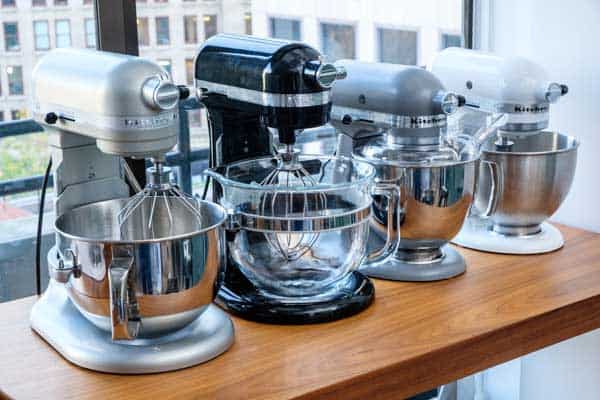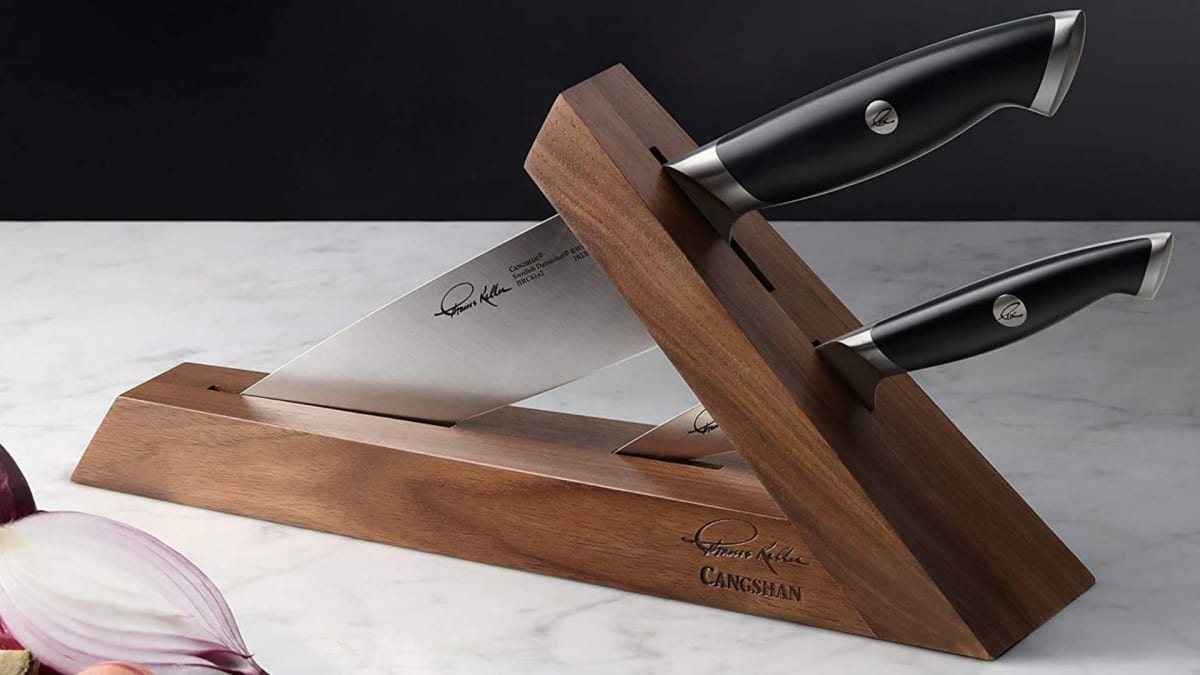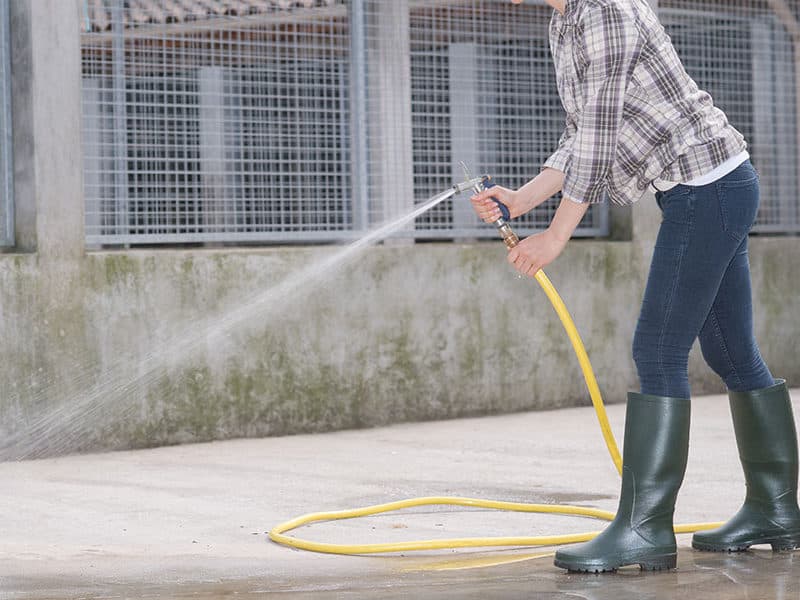Whether you’re looking to do a kitchen remodelling or just want to add further appliances to your kitchen, you probably have heard of the company Kitchenaid, which has produced tens of successful products over the years..
Kitchenaid classic and Kitchenaid artisan come from the same company, but they are 2 different mixers. This article will show you the difference between them so that you can decide what mixer is right for you before making a final decision.
Let’s dive deep into this topic.

Image Credit: http://thewindupspace.com
Kitchenaid Classic Vs. Classic Plus Vs. Artisan
You can purchase numerous kinds of mixers in the market but it can be confusing when comparing all the possible choices. One thing to look out for is the tilt-head – in some models it is usually cheaper and gives the user an easier way to add and mix ingredients because the head can be tilted up and backward during the unit’s operation.
All of these mixers are heavy and bulky and you may find it hard to make space on the countertop when you have a small kitchen.
There are 3 main kitchen Aid mixer classes: classical, artisan, and professional. There is overlap between features of various classes.
Which mixer is better: Kitchenaid Classic or Artisan?
The Kitchenaid Classic and Artisan are two of its most common small mixers. Selecting the right standing for cooking will mostly come down to how heavy a user you are and how often to use it. The classic and the artisan mixer are easily the most popular in the world. If you are someone who bakes from time to time but is not that big of a baker, the classic is probably your best choice.
Both mixers offer many of the same features and functions (like dough hooks), and with each model, you can find hundreds of accessories to choose from. There is no longer a price difference between these two models since in the last year, Artisan mixers have become more expensive and match the price of the classic.
What’s the difference between KitchenAid Classic and Artisan?
The KitchenAid classic stand mixer has a 4.5-quart stainless steel bowl while the Artisan has a 6 quart glass bowl. The lack of a tilt head allows the Whip and dough hooks to stay in place while mixing. Another big difference is that the Artisan has two speeds compared with a six-speed classic model, and there is no pulse feature on the classic mixers.
The advantage of this stand mixer over other KitchenAid models is that they have a better motor than most and users can choose from many different colors.
The classic series can fit the accessories that come with the Artisan Series, but they won’t fit those made for other units in the KitchenAid line. Some users have reported having trouble finding the correct accessories for each unit because one may be larger than the other.
Shared features of these Kitchenaid models
The Artisan and Classic Plus both have a similarly sleek design. Both are tilted mixer heads in style and have the desirable 59 points planetary rotation that allows smooth mixing. Although graceful, their design makes this machine quite large. Both are NOT intended for commercial purposes so if you intend to turn to baking to be a side-job then consider a different option. Commercial application on either model can invalidate its warranty. All KitchenAid’s orders will always be supported with outstanding service and one-year guaranteed product support – if used correctly.
KitchenAid Professional Stand Mixer
The Commercial Mixer offers the best power supply from the largest bowl and the strongest motor. The bowl-lift design makes it sturdier because it does not have the additional hinges needed to tilt the chin. The disadvantage is that it takes a bit more effort to add in the ingredients and change attachment settings in the mixer. The professional model is intended for the heavy work of mixing and kneading large quantities of dough at one time but it becomes more complicated than the tilt heads of the Classic Series.
KitchenAid Classic 4-1/2-quart stand mixer
The battery on this model has a rating of 250 Watts but this gives enough electricity to make only occasional bread dough and cookies. There are optional add-ons like a juicer grinder and even bladers that can be added to the machine on purchase.
Kitchenaid 4.5-qt. Classic Plus Stand Mixer
KitchenAid Classic Plus is only available in white. The Classic Plus has 275 watts of power compared to the Classic. The faster a motor is, the less strain it will endure to overcome whatever combination or beating job. This eventually is going to last a longer length of time. For optional colors, a customer would have to look elsewhere.
Which has better accessories and attachments?
The kitchen aid artisan allows greater balance control and ease for the wrist and the back. A splash shield is useful when serving two recipes or more. A 4.5-quart bowl with a handle to suit classic cooking aid is available. With 40 exciting color possibilities, the artisan does not lose in any respect to appearance or quality. The flat beater and the dough hook are nylon coated. They are both 5-wire whiskers. For both, they come packaged in 4.4-quart containers. Elegant glass cups are also available for that favored crowd member.
On the other hand, the Artisan Classic mixer has no guard. A splatter guard is a plastic piece that fits over the mixing bowl and blocks any conceivable splatters in any mixture. Kitchenaid’s pourer guards are available separately. The wire ball whisk could be easily used for lighter mixtures such as frosting or whipping eggs.

Image Credit: http://thewindupspace.com
The most frequently used mixer attachment is the flat beater and the dough hook. The wire balloon Whizzer is the most commonly used on cookies and cakes.
Final thoughts on Kitchenaid classic vs artisan
In conclusion, Kitchenaid has many great selections for its kitchen appliances. Kitchen aid is an amazing company and has loyal customers because of the quality they produce. They are a great asset to anyone’s kitchen – from first-timers to food gurus. They provide warranties on each appliance which is beneficial in case anything ever happens with your mixers or other appliances.
All of the above means that it’s probably a good idea to go with Kitchenaid products in your kitchen when choosing the appliances for your specific needs.
Finally, feel free to check out this article that speaks about upgrades that will keep your kitchen looking new, if you want to take your kitchen experience to the next level.
The post Kitchenaid classic vs artisan appeared first on Kitchen Infinity.
Did you miss our previous article…
https://chefbuano.com/?p=88










